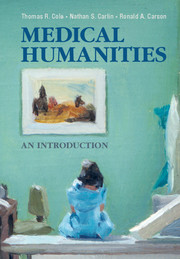Book contents
7 - Narratives of Illness
from Part II - Literature, the Arts, and Medicine
Summary
All sorrows can be borne if you put them into a story or tell a story about them.
– Isak DinesenAbstract
This chapter explores how we narrate our experiences of illness. Beginning with a discussion of how narrative shapes our experience of brute fact into intelligibility and meaningfulness, it examines four narratives of illness: Oliver Sacks’s A Leg to Stand On, William Styron’s Darkness Visible, Lucy Grealy’s Autobiography of a Face, and Aaron Alterra’s The Caregiver. Then, with a focus on the relationship between narrative interpretation and our encounters with illness, it considers how reading narratives of illness attentively, expectantly, and reflectively can heighten our powers of perception, deepen our self-knowledge, and thicken our understanding of what it’s like to suffer through an illness or cope with an injury.
INTRODUCTION
This chapter discusses a type of illness narrative known as “pathography,” a subgenre of autobiography and biography. And it offers “readings” of four such narratives, each with a different focus – loss of bodily integrity, mental collapse, disi guring cancer, and incurable degenerative disease – and all authored by professional writers.
- Type
- Chapter
- Information
- Medical Humanities , pp. 125 - 137Publisher: Cambridge University PressPrint publication year: 2014



